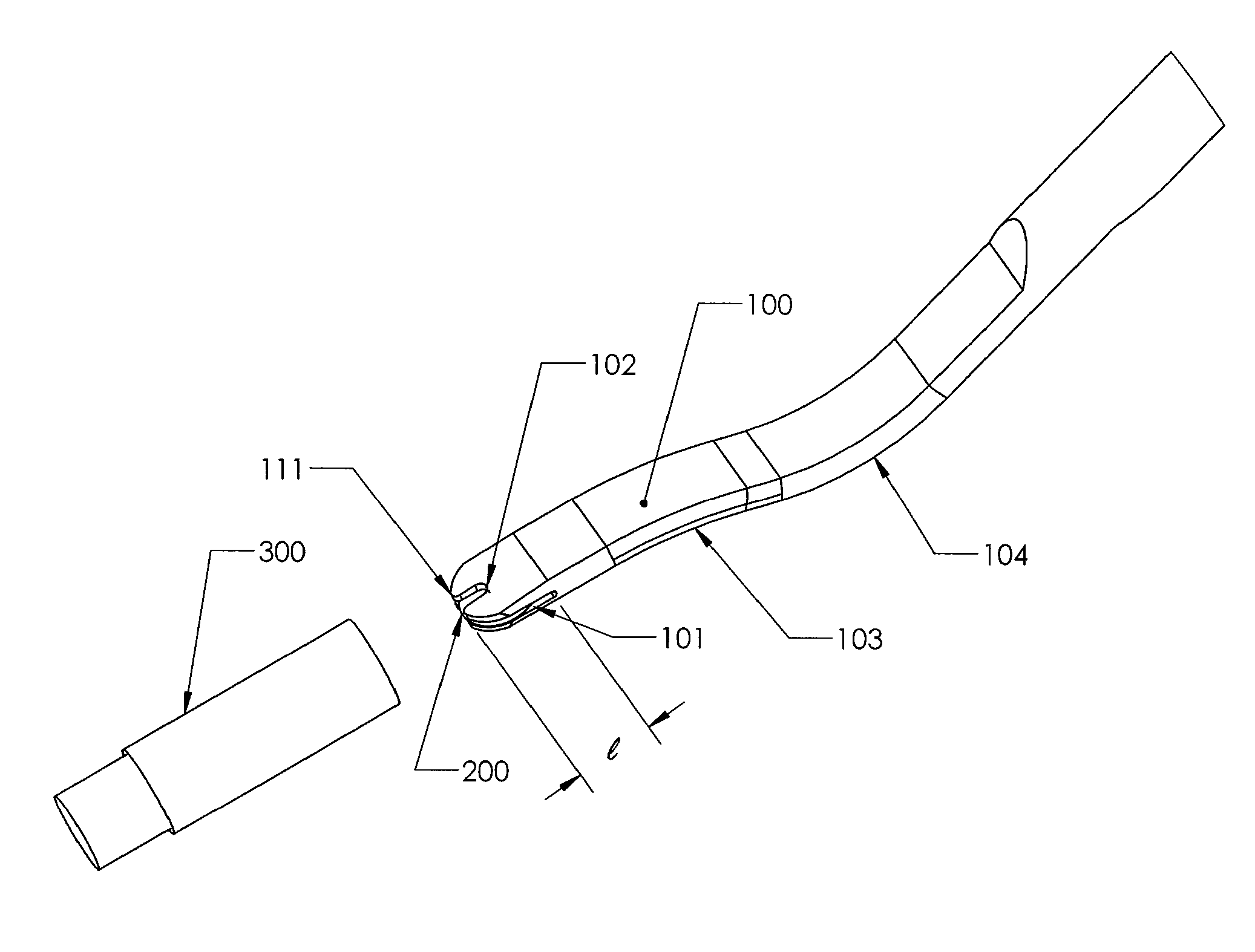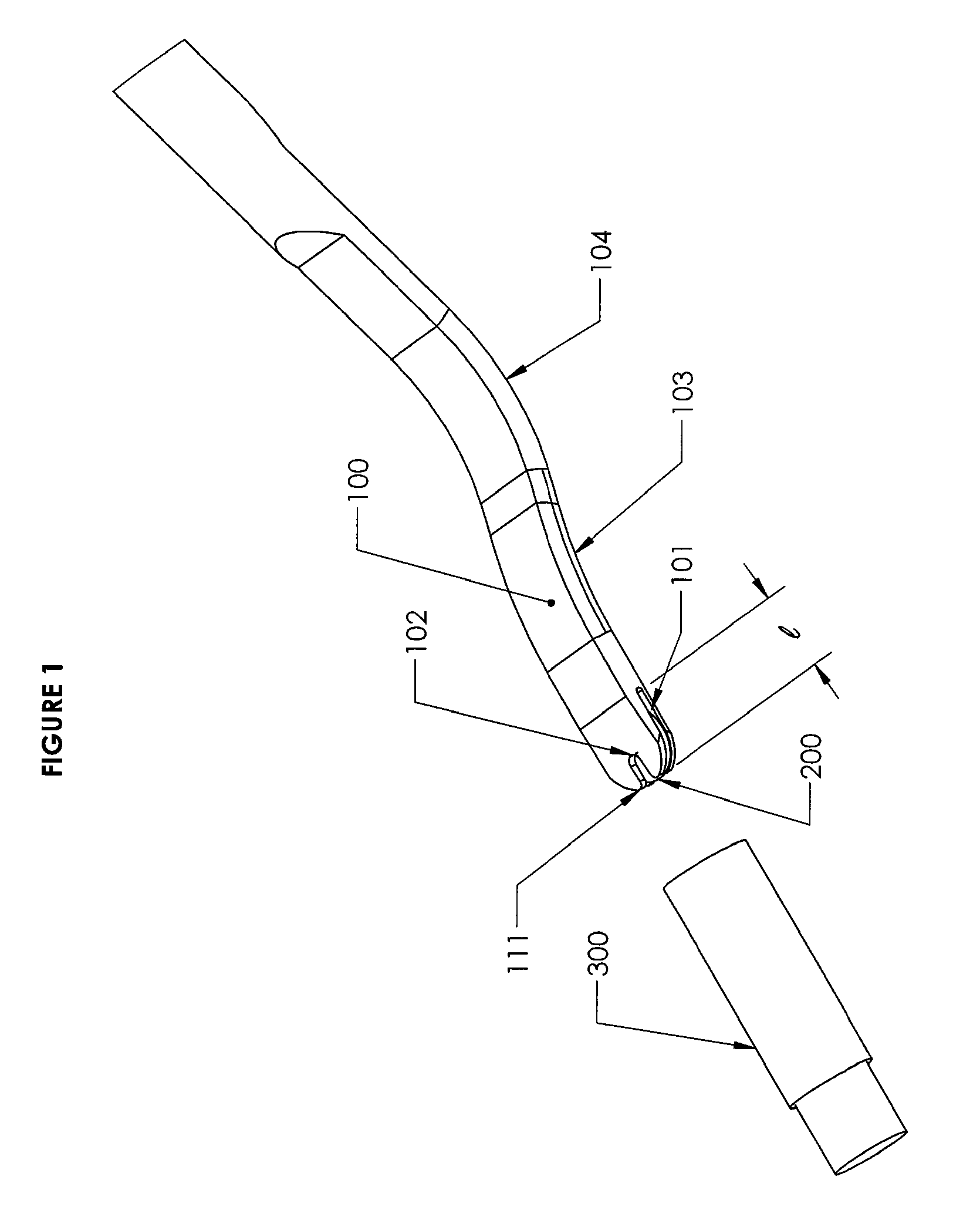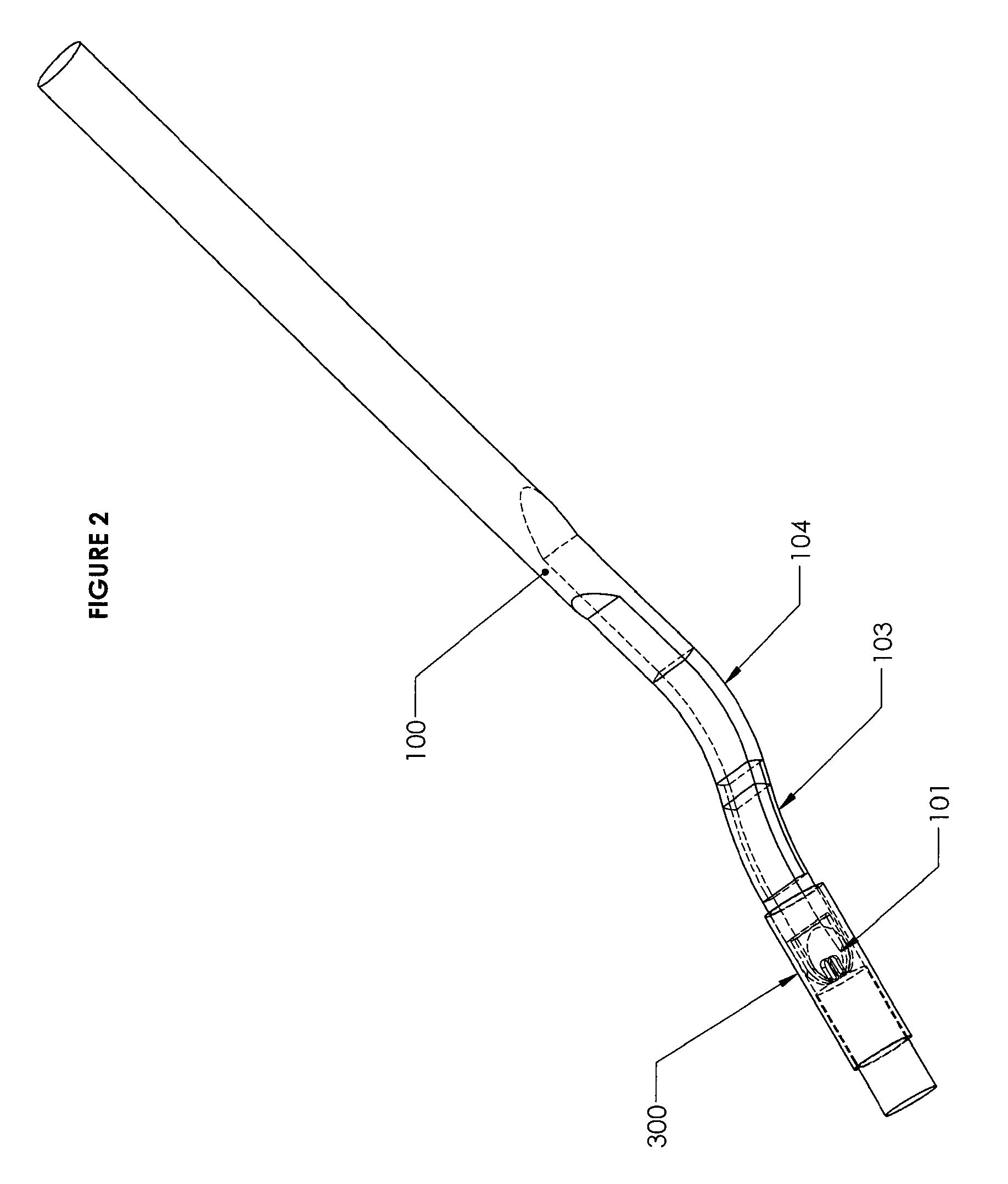Insertion system for corneal implants
a corneal implant and insertion system technology, applied in the field of corneal implants, can solve problems such as vision impairment, and achieve the effect of small siz
- Summary
- Abstract
- Description
- Claims
- Application Information
AI Technical Summary
Benefits of technology
Problems solved by technology
Method used
Image
Examples
Embodiment Construction
[0024]FIGS. 1-5 show an insertion system according to an embodiment that is particular suited for delivering a corneal implant, e.g., inlay, in or on the cornea. The insertion system is also suited for storing the implant prior to its use. The insertion system includes an inserter 100 having an elongated body, which may be made of titanium, stainless steel, plastic, or other biocompatible material. The inserter 100 comprises a distal portion having generally flat top and bottom surfaces. The distal portion of the inserter 100 includes a clearance bend 104 where the inserter is bent to provide clearance between the inserter and a patient's facial features (e.g., nose, cheeks, etc.) as explained further below. The distal portion of the inserter 100 also includes a curved portion 103 that is contoured to follow the shape of a patient's cornea as explained further below. The curved portion 103 is concaved on the bottom surface of the inserter 100.
[0025]The inserter 100 further includes ...
PUM
 Login to View More
Login to View More Abstract
Description
Claims
Application Information
 Login to View More
Login to View More - R&D
- Intellectual Property
- Life Sciences
- Materials
- Tech Scout
- Unparalleled Data Quality
- Higher Quality Content
- 60% Fewer Hallucinations
Browse by: Latest US Patents, China's latest patents, Technical Efficacy Thesaurus, Application Domain, Technology Topic, Popular Technical Reports.
© 2025 PatSnap. All rights reserved.Legal|Privacy policy|Modern Slavery Act Transparency Statement|Sitemap|About US| Contact US: help@patsnap.com



